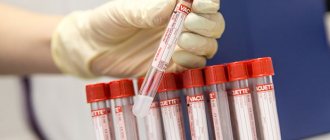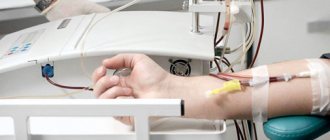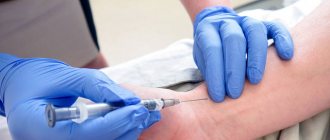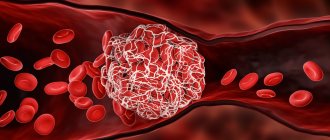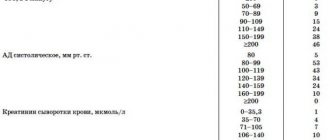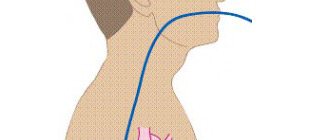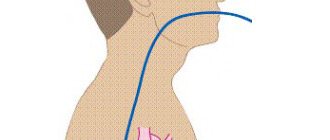Echoencephalography is a diagnostic neurophysiological study of the structure of the brain, aimed at identifying its pathological processes and changes. The method is non-invasive and requires the use of ultrasonic waves. Thanks to it, it is possible to determine intracranial pressure and identify volumetric processes due to which structures are displaced.
At the same time, it does not allow one to accurately determine the type of detected formations, therefore it is accompanied by computed tomography or magnetic resonance imaging. These are more accurate ways to make an accurate diagnosis.
Echo-EG of the brain involves scanning and calculations by a doctor. They are necessary in order to determine the parameters of the internal volume of the skull and the presence of displacements of brain structures, to identify an increase in intracranial pressure after injuries or due to neoplasms.
You can undergo an Echo-ECG in Moscow at the CELT multidisciplinary clinic. We have everything necessary to obtain all the necessary information and correctly interpret research data.
Echoencephalography of the brain (Echo-EG) - 1,200 rubles.
15 minutes
(duration of procedure)
Outpatient
Advantages of echoencephalography of the brain in CELT
We employ specialists with many years of experience, allowing them to carry out diagnostic studies as accurately as possible and obtain all the necessary data. They have modern equipment in their arsenal that allows them to get a complete picture. Thus, Echo-EG of the head in our clinic allows:
- identify neoplasms in the early stages of their development;
- conduct a qualitative study of the midline structures and periosteal space;
- determine ICP indicators and the nature of pulsations;
- minimize the human factor and increase diagnostic accuracy.
You can find out the price of Echo-EG in our clinic in the corresponding section of our website or by calling us!
Indications for ultrasound echoencephalography
The study is carried out as part of primary neurological diagnosis when the patient complains of:
- headache;
- constant feeling of nausea;
- frequent loss of consciousness;
- feeling of pressure on the eyes;
- incessant noise in the head;
- disturbances in concentration and memory.
The indication for this is an increase in ICP or the need to measure it, suspicion of the presence of neoplasms, foreign objects, cysts and hematomas in the cranial cavity if computed tomography and magnetic resonance imaging are not available. The study is carried out if necessary:
- confirm the presence of diseases such as epilepsy, brain damage of a degenerative, vascular or inflammatory nature;
- identify the patient’s simulation of hearing and visual impairments;
- assess the brain functioning of comatose patients;
- determine the cause of sleep disturbances and abnormal surges in blood pressure;
- determine the efficiency of functioning of blood vessels and tissues.
results
Decoding Echo ES is the competence of a neurologist, diagnostician or neurophysiologist. Normally, it is believed that the signal from the first sensor should be identical to the signal from the second. A signal that deviates by 1-2 mm from the original value can be called pathological (an error of up to 3 mm in children is acceptable).
If the initial signal changes, it means that within the cranium there is a dislocation of structures due to a volumetric process, which can be:
- tumor;
- intracerebral hemorrhage;
- cyst;
- purulent abscess;
- tuberculoma;
- accumulation of parasites.
- volumetric inflammation.
However, different diseases have specific signs on the monitor:
- Tumors and cysts. They greatly displace brain structures compared to other brain diseases, and therefore increase the difference between the original and received signal.
- Trauma to the skull and brain. They show a difference of within 3mm due to the formation of edema. Later, injuries can provoke the development of cysts, which increases the difference between signals from 3mm.
- Acute cerebrovascular accident. Intracerebral hemorrhage makes a big difference. The value of the lateral echo signal increases due to the presence of a focus of hemorrhage in the tissue. Ischemic stroke, cerebral infarction and softening of brain tissue produce subtle signal differences.
- Hydrocephalus. This pathology produces a signal difference of more than 7 mm.
Contraindications to echoencephalography in M-mode
Echoencephalography of the brain in children and adults is a safe procedure. It does not require the use of painkillers (or any other pharmacological drugs) and has no physiological contraindications. However, it should be postponed during acute respiratory diseases accompanied by a runny nose and/or cough. It is not used if the patient has open wounds or suffers from psychological disorders in the areas where the sensors need to be installed. The latter can cause hysterics due to the unfamiliarity of the situation.
How to properly prepare a child for research?
Without preliminary preparation, the research procedure may cause fear in young children due to the specific preparatory manipulations performed. Therefore, it is recommended that parents prepare their baby in advance. Young children can be prepared in a playful way, for example, by telling the child that he will try on the helmet of an astronaut, pilot or superhero. Older children need to be explained in detail how the EEG procedure will be performed, even shown if possible. With such preparation, children come for diagnostics with pleasure and are not afraid of anything, which guarantees a successful recording of the study.
Preparation for the procedure and its implementation
One- and two-dimensional echoencephalography does not require the patient to prepare independently. All he needs to do is visit the diagnostic room at the appointed time. Before starting the examination, the diagnostician will ask him to remove from his head any accessories that may interfere.
During the process, the doctor installs an ultrasound sensor in certain areas of the head. To ensure high-quality contact, a contact gel is first applied to them. This prevents air from entering and causing interference. The sensor is placed:
- above the ear canals;
- near the outer edges of the eyebrow arches (at the temples);
- behind the ears at a distance of four to five centimeters.
By sending ultrasound signals, the sensor catches them in reflected form and transmits them to the device, which displays them on the monitor in the form of a graphic image similar to the teeth of an electrocardiogram.
When carrying out the procedure in a two-dimensional format, the sensor is not rearranged sequentially - it is moved along the surface of the head, providing an image of the slice in a horizontal plane along the line of its movement. An image of the formations located at this level is displayed on the screen. The duration of the procedure is no more than 15 minutes.
ECHO-EG, EEG, REG
ECHO-EG, EEG, REG are studies that are prescribed to patients to study the brain. At first glance, complex abbreviations seem exactly the same or interchangeable. In fact, this is not so, ECHO-EG, EEG and REG are completely different studies, let’s take a closer look.
ECHO-EG - echoencephalogram - is a method of studying the brain, which measures the width of the third ventricle of the brain, the displacement of the midline structures of the brain (M-ECHO).
Indications for this study are: headaches, arterial hypertension, migraine, cerebrovascular accidents, concussion, head injuries, decreased vision.
When performing echoencephalography, no preliminary preparation is required.
EEG - electroencephalography - is a method for studying the functional state of the brain by recording its bioelectrical activity. A special cap with electrodes-antennas, which are connected to the device, is put on the person’s head. Signals coming from the cerebral cortex are transmitted to an electroencephalograph, which converts them into a graphic image (waves).
Conducted to identify brain excitability (epileptiform brain activity).
Indications are: epileptic seizures, fainting, traumatic brain injuries, mental disorders, enuresis, VSD.
REG - rheoencephalography is one of the most effective and simplest ways to diagnose cerebral circulation. REG of cerebral vessels is a safe diagnostic method, has no contraindications and can be prescribed to a patient of any age. The study is carried out using a special recording device - a rheograph. The patient lies down or sits in a comfortable position, closes his eyes, electrodes are applied to certain points on the head and secured with rubber bands. A weak current is passed through the electrodes, and the resistance readings of the brain tissue are recorded and then deciphered.
Rheoencephalography is prescribed for diagnosing cerebral vascular lesions, monitoring blood circulation in the brain after injuries or operations, for assessing hypertension, for assessing the state of the brain (in case of head injury, encephalopathy, pituitary adenoma, after ischemia or stroke) for diagnosing VSD and SVD.
At the Good Doctor clinic, they conduct ECHO-EG and REG brain studies for adults and children over 4 years of age according to indications and referrals from a neurologist, ophthalmologist, otolaryngologist, internist or pediatrician.
Decoding echoencephalography of the brain
The results of the diagnostic study are interpreted by a neurologist. As already mentioned, the norm provides for the same distance from the central signal to both sides. The permissible deviations are no more than two millimeters for adults and three for children.
During volumetric processes in the GM substance, a shift in the central signal occurs, changes in the shape and duration of responses. Thus, the following pathological conditions can be identified:
- intracranial neoplasms of benign and malignant etiology;
- tuberculomas;
- hematomas localized in the intracranial space;
- cerebral infarctions;
- focal accumulations of pus in the GM substance;
- syphilitic granulomas.
Their localization is determined by median deviations. The distance to the central signal on the side of the formation is greater than on the healthy side, although in certain inflammatory diseases and stroke the opposite may be true. A similar phenomenon can be triggered by a decrease in the volume of one hemisphere during recovery processes, when scarring or resorption is observed.
The doctor determines the presence of a problem based on echo-EG readings:
- with tumors of malignant etiology, a serious shift is observed;
- infarction states of the brain are characterized by small transient changes;
- in case of traumatic injuries, displacements of no more than three millimeters are observed due to swelling;
- hydrocephalus is characterized by expansions of the central signal from five minimeters and the appearance of a large number of lateral ultrasound signals;
- suspicion of hemorrhage arises with the most serious asymmetry.
It is important for patients to understand that the diagnostic accuracy of this method directly depends on the qualifications and experience of the specialist, as well as on the characteristics of the device involved in the process.
Make an appointment with our specialists by filling out and sending us an application online or by calling us by phone! Trust the diagnostics to professionals!
Features of the examination
As a rule, during the examination the person lies down (in rare cases, sits). The duration of this procedure is approximately 10–15 minutes.
Today, one-dimensional ultrasound of the brain can be done at home, and even in an ambulance, but only if the device is equipped with a battery.
Echo-EG is carried out in 2 different modes:
Emission mode (when 1 sensor is used). It should be installed in places that will allow ultrasound to easily pass through the cranial bones directly to the brain. You will need to move the sensor in order for the image to be more informative.- Transmission mode. 2 sensors are used at once. They are installed on both sides of the head, but on the same axis. As a rule, the line on which the sensors are located coincides with the midline of the head.
To obtain two-dimensional echoencephalography, it is necessary to move the sensors around the perimeter of the head. The effectiveness of this procedure in identifying small formations is quite low.
In the case when an initial study of the brain is carried out, designed to identify minor disorders, it is recommended to resort to MRI.
